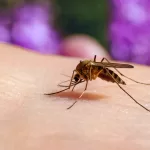A breakthrough study led by researchers from Oregon State University College of Pharmacy and Oregon Health & Science University has introduced a promising advancement in genetic therapy delivery, potentially transforming treatments for hereditary conditions such as cystic fibrosis and inherited vision loss.
Published in the Proceedings of the National Academy of Sciences, the study led by Gaurav Sahay, Yulia Eygeris, and Renee Ryals details the development of a new type of lipid nanoparticle capable of targeting both lung and retinal tissues, a significant stride in genetic therapy delivery.
Traditionally, lipid nanoparticles tend to accumulate in the liver. However, the innovative lipid nanoparticles developed in this study, known as Thio-lipids, navigate efficiently to the lungs and eyes, offering a promising avenue for delivering therapeutic payloads. Thio-lipids are based on the compound thiophene.
The study, conducted using animal models, demonstrated the potential of Thio-lipids in lipid nanoparticles to deliver messenger RNA (mRNA), the technology underlying COVID-19 vaccines, for combating genetic blindness and pulmonary diseases.
Eygeris, a senior research associate at OSU, highlighted the versatility of these nanoparticles in encapsulating genetic medicines like mRNA and CRISPR-Cas9 gene editors, offering treatment options for rare genetic diseases.
With mRNA serving as the instruction manual for protein production, the lipid nanoparticles equipped with mRNA could potentially restore vision in cases of inherited retinal degeneration. Similarly, for genetic pulmonary conditions like cystic fibrosis, the lipid nanoparticles could target lung tissues to rectify faulty genes.
Sahay emphasized the limitations of current gene therapy delivery methods, such as adeno-associated virus (AAV), prompting the need for alternative approaches like lipid nanoparticles. The Thio-lipid findings, although promising, require further study to assess their long-term impact on retinal health.
Funding from the National Eye Institute, Oregon National Primate Research Center, and the Casey Eye Institute supported this groundbreaking research, which paves the way for innovative treatments addressing a spectrum of genetic diseases affecting millions worldwide.












